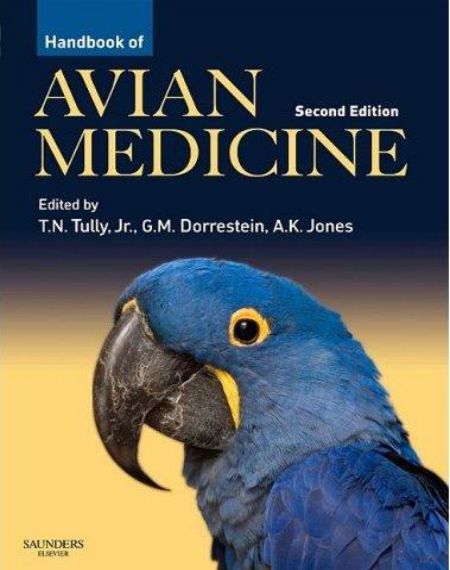Handbook of Avian Medicine 2nd Edition by Thomas, Avian Medicine has been developed to give the average small animal practitioner a complete information source for the basics of avian medicine and surgery.
Handbook of Avian Medicine 2nd Edition by Thomas

It is a multi-author text, which utilizes the international expertise of the avian veterinary community. By incorporating the knowledge of authors from Europe, Africa, Australia and North America, different techniques that have been successful in treating the average avian patient are covered.
* At last: a book on avian medicine aimed at the general veterinary practitioner
* This multi-author text combines best practice tips and different techniques from avian experts worldwide, providing quick access to crucial information for the non-specialist
* Here is a complete information source on the basics of avian medicine and surgery that should be required reading for every veterinary practitioner
There have been a number of surveys per-formed by veterinary research groups concerning the number of avian patients seen per week in the average small animal practice. In those practices that see avian and exotic patients, on average two to three bird cases are seen each week. Most of the veterinary surveys show that the vast majority of avian owners, approximately 80 per cent, do not seek veterinary care. There is therefore great potential for veterinarians to offer health care for these untreated birds and maintain them as healthy pets for their owners. To garner this population of potential avian clients, there must be competent caring avian veterinarians.
The first five chapters cover the basic medical information needed to run a primary care avian practice. Again, the focus of the text is on introductory level material and the average companion animal practice. If you see between one and five birds a week, this text is for you.
The later chapters are species-specific. If a practice sees avian patients, it is not unusual to treat any one of these species. The information in these chapters will allow the veterinarian a comfort zone of knowledge in order to evaluate, treat and/or refer.
We hope the book reaches the groups of veterinarians and allied technical staff who need it the most; also veterinary students, veterinary technicians and the general veterinary practitioner.
| RAR Size: 9 MB | Go Book Download |
Password: pdflibrary.net
